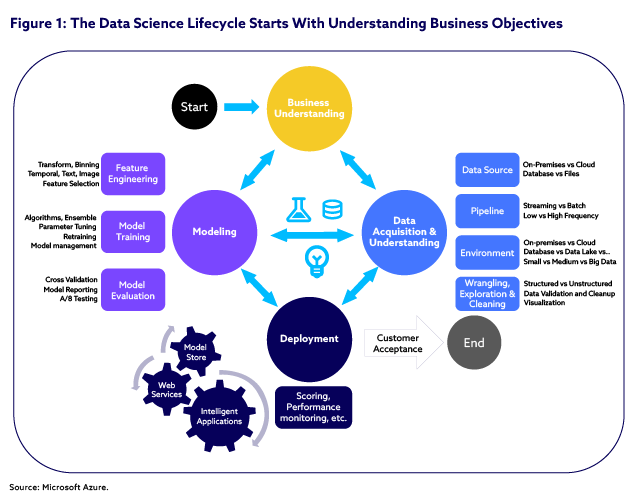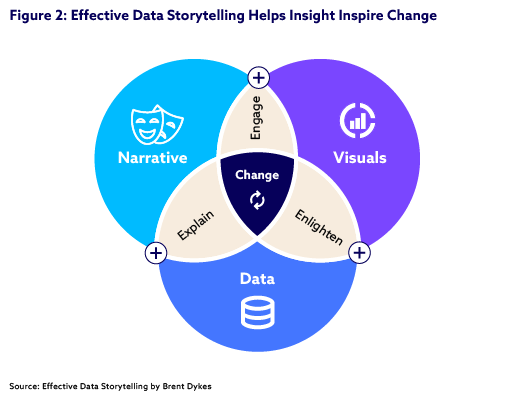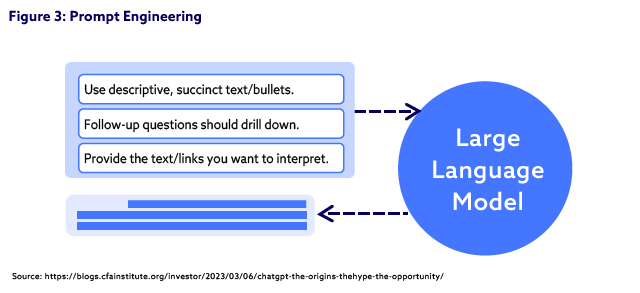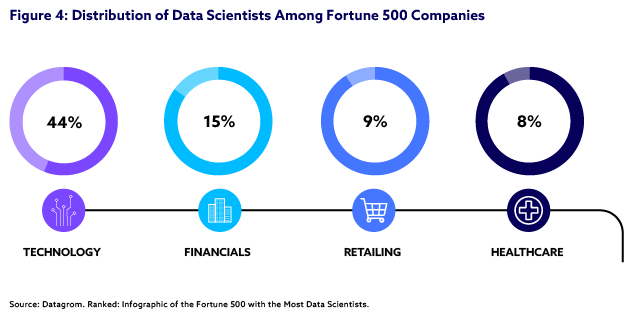CFA Institute
Why Communication is Key to Getting the Most Out of Data in Finance
Overview
Investment professionals and data scientists need to be able to speak the same language to ensure they get the most out of data-driven insights.
As financial institutions look to harness advances in technology to improve productivity, they are coming to realize that they need to involve their entire workforces in their data strategies. Thanks to developments in artificial intelligence (AI) and big data, access to complex data and analytical tools is becoming easier, and the traditional silos separating the IT team and business lines are being dismantled. That opens up new opportunities for investment professionals to leverage cutting-edge solutions to add real value to their clients and to the financial industry.
In order for that to happen, however, “the investment community needs to understand the tools, capabilities and limitations of data science, and the data scientists have to understand the kinds of problems they might have to solve,” said Richard Fernand, Head of Certificate Management at CFA Institute.
Because financial institutions often hire quantitative analysts from non-financial backgrounds – physicists are common – these data specialists are often not accustomed to grappling with investment problems, said Fernand.
Insight + Communication = Value
According to Mark Ainsworth, Senior Data Science Consultant, the essence of data science is generating insight then communicating it. “Value is derived by putting into the head of another person the insight that changes their understanding of the world and causes them to take a different action than they would otherwise,” he said.
Without clear communication between the two parties, that process could be undermined in several ways.
First, without first determining what an investment professional already knows, the data scientist risks wasting time producing low-value research.
The data scientist also needs to avoid bias and other common mistakes to ensure the insight they are communicating is valid and actionable in order to preserve their credibility – because insights can only add value if they are accepted.
And finally, the data scientist needs to be able to convey the insights in a way that the recipient can understand them. (See Figure 1.)

To help make the insight more easily comprehended by others, it is often best to summarize and simplify it..
“You don’t need to give them all the detail that went into answering the investment question, because while that’s in service of truth, it’s not in service of comprehension,” said Ainsworth. .
“So many of the things that make the difference between something being an insight and being just boring, useless, irrelevant or confusing, require you to actually have a conversation to understand what's in that person's head,” he said.

When it’s Time for a Tiebreaker
It’s possible for two equally qualified data scientists to come up with different but equally correct answers to the same problem, according to Sam Livingstone, Head of Data Science at Jupiter Asset Management. When that happens, each data scientist needs to vet their model by walking investment professionals through the logic to ascertain whether it makes causal sense, or whether it is merely correlative and they may have “stumbled on it by accident,” as Livingstone put it.
Again, that requires an ability to convey a data story clearly and compellingly to someone who may know little or nothing about data science.
An inability to articulate the benefits of data and related insights is often “a point of failure” for otherwise highly capable data scientists, said Anastasia Diakaki, Senior Director, Product Management Professional Learning at CFA Institute. “They have the right talent, the right skills, but it all seems to fall apart because they can't quite explain to their company what benefit is derived from this.”
Meanwhile, investment professionals need to be able to grasp and communicate the data-driven insights underpinning their returns to asset owners.
“We have an obligation as money managers to be able to explain the factors that drive our performance. It’s not good enough to just point to a blackbox model and say ‘I don’t understand how it works, but it churns out these returns for you,’” said Fernand.
Talking to Machines
As data becomes ever more integral to all aspects of work and life, investment professionals are likely to benefit from a deeper understanding of data science and AI techniques, including the ability to craft the prompts that provide the vital inputs for generative AI based on large language models (LLMs) such as ChatGPT. (See Figure 3.)
“The trick to get it to perform well is to explicitly give it all the context and background, and not take for granted that it knows what you’re thinking and why you’re asking the question,” said Ainsworth.
Without that clarity, LLMs will often do a bad job.
“That speaks to how much of how we interpret what each other says depends not just on what is said, but also on all sorts of other unsaid background bits of information,” added Ainsworth.
Providing that background through effective prompt engineering is “a skill many people think they possess, but they actually don’t,” said Isaac Wong, Assistant Fund Manager at eFusion, Hong Kong.
Wong details a technique known as chain-of thought prompting, which, in contrast to standard prompting, teaches the models by dividing complex problems into smaller steps and providing both the intermediate reasoning steps and the final solution. This ultimately leads to more accurate answers

Competing for talent
Improved communication between business and technology functions can also be useful in attracting data scientists away from the technology sector.
According to an analysis of job titles on LinkedIn, over four in 10 data scientists working for Fortune 500 companies are employed by technology firms. The financial sector is a distant second, with 15%. (See Figure 4.)
“Tech has been the sexy place to work for a long time. Investment firms, who have a more traditional culture, need to reinvent themselves,” said Fernand.

In a bid to compete for top data talent, financial institutions are increasingly trying to present themselves as tech firms, said Fernand. To do that convincingly, investment professionals need to be able to engage with data scientists more effectively.
This, ultimately, could create a more enriching work environment for all concerned.
View more Data & Technology stories


